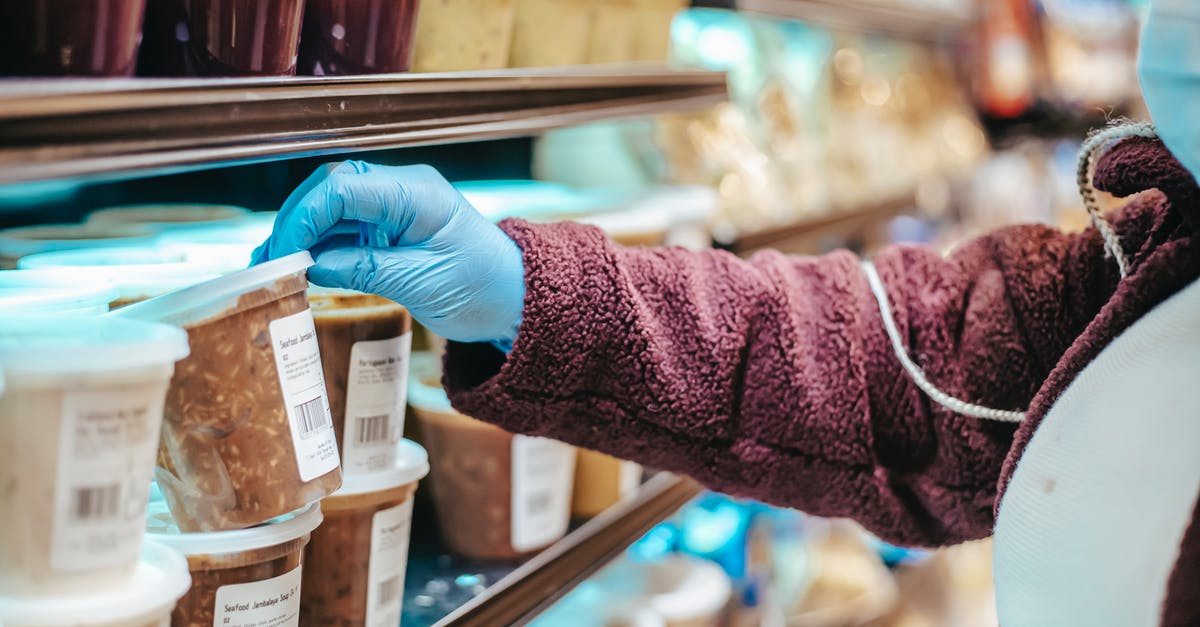Food safety of sauerkraut whose brine evaporated below surface?

We started a batch of sauerkraut about a month ago. We used the outer leaves of the cabbage to cover the shredded cabbage below. The cabbage was brined with adequate salt (about 2 tsp per pound). The brine level was well above the surface of the cabbage, which was displaced even more by a plastic bag filled with additional brine.
We last checked it about a week and a half ago, but the brine was at the same approximate level.
Today we checked it, and the brine level was below the surface of the cabbage. The top leaves smelled musty, so I removed them, as well as the 2 or so inches of cabbage below them. At that point, the cabbage smelled exactly as it should - salty, lactic-acidy. It also tastes excellent.
Most recipes I find simply note that if the brine level drops below the surface, just add more brine. My concern is that I don't know how long the brine has been below the surface.
I know most toxins can't survive in a lactic-acid/salt-rich environment, so are we ok? I am planning to hot pack and can today just to be safe, but it seems to be passing all visual/taste/smell tests. My biggest concern would be botulism, but botulism can't survive with that amount of salt.
Am I ok? Or should I err on the side of caution?
Best Answer
Unfortunately nobody can give you a definitive answer about your batch without testing. But I can give you more information to help you make a more informed decision.
As you are, I'm concerned about botulism. You mention that "botulism can't survive with that amount of salt". I'm not sure whether that's true. If an environment is salty enough, or if it's less salty but acidic enough, you're all set. But the question is what's enough; at some point it's far less likely, but not impossible, for clostridium botulinum to survive.
Your primary defenses were (1) a salty, acidic environment below the surface, and (2) oxygen at the surface. It's hard to know whether the cabbage tissue at the surface was anaerobic enough; maybe so. As for acidity at and near the surface, if mold was involved somehow that could lead to a drop in acidity. From Sandor Katz's excellent The Art of Fermentation, p. 50:
Molds can also digest lactic acid, lowering the acidity of the ferment that enables it to be effectively preserved.
So...
- if the surface environment became tolerable for c. botulinum, and
- if it grew in that environment, and
- if it produced botulinum toxin, which then got into the submerged kraut
then as I understand it, boiling and canning won't change the presence of that toxin unless you boil it for at least 10 minutes. (Thanks to Josh Caswell for pointing this out in the comments).
On the other hand... that is a whole lot of ifs.
I'm just an informed layperson, so you'll need to make your own food safety call based on this and information from others. My guess: your kraut is just fine.
But because I always err on the side of caution, in the same situation I'd probably chuck the batch (with tears in my eyes). Though not in this exact situation, I've done it many times, and it hurts, but I sleep better, especially since I share my ferments with others.
Or if your "hot pack" will heat the kraut long enough to address both botulinum spores and toxin—I know nothing about canning—you're probably fine too. I'm not sure what that does to the kraut's texture, and you lose probiotic benefits, but it sounds like addresses the safety concern, at least for botulism.
Some more sources:
- The CDC has lots of info on botulism, as does Seasoned Advice.
- The Three Biggest Fermenting Mistakes You're Already Making has a concise list of fermentation warning signs.
- NC State University has a safety sheet on fermenting vegetables.
Pictures about "Food safety of sauerkraut whose brine evaporated below surface?"



Can you get botulism from homemade sauerkraut?
Will lacto-fermented pickles or sauerkraut give you botulism? No. Fermenting foods creates an environment that botulism doesn't like.Can I rinse the salt out of sauerkraut?
If you must limit your salt intake, rinsing is recommended. Sandor Ellix Katz, aka Sandorkraut, and author of "Wild Fermentation" (Chelsea Green, 2003) says you can make low-salt and salt-free sauerkraut by substituting salt with wine or with ground, savory seeds such as caraway, celery and dill and a little water.Can you get food poisoning from homemade sauerkraut?
While most fermented foods are safe, it's still possible for them to get contaminated with bacteria that can cause illness.Should sauerkraut be rinsed?
Most canned sauerkraut comes in brine (usually salt and water), so you don't have to rinse it before you strain it. Not rinsing it helps preserve the flavor in canned sauerkraut. However, if you prefer milder-tasting sauerkraut you can rinse it with water before the straining process.How to tell if your Sauerkraut has gone bad!
Sources: Stack Exchange - This article follows the attribution requirements of Stack Exchange and is licensed under CC BY-SA 3.0.
Images: Laura James, Anete Lusina, Anna Tarazevich, Laura James
